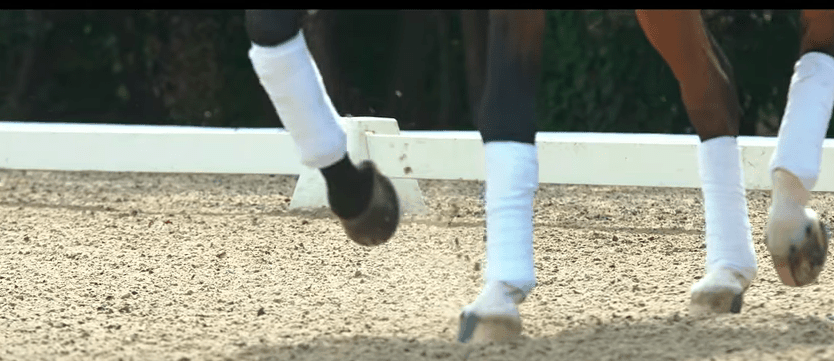How to maintain your arena during winter months

The weather at this time of year can make it hard to maintain your arena. We spoke to Nicholas Collins from Martin Collins Enterprises, the world’s leading synthetic riding surfaces manufacturer, about common issues people encounter at this time of the year.
The right surface
Although we don’t tend to get huge variations in temperatures in the UK, we have to remember that in winter months there is a risk of below minus, so when considering having an arena put in you need to think about the type of surface.
Un-waxed surfaces are prone to freezing, however, certain wax-coated surfaces have excellent climatic tolerance. With correct maintenance, there is no reason not to get full use of your outdoor arena, all year round. Surfaces that have been treated with a wax coating generally require less maintenance than their un-waxed counterparts.
Low-cost alternative
While we would recommend a waxed surface for longevity, easy maintenance and superior rideability, we also offer an un-waxed performance surface called Fibretrack. This is a blended surface comprising of CLOPF fibre and washed silica sand. For those on a budget, it is a cheaper alternative to a waxed surface and therefore ideal for your arena, while still providing a secure footing and exceptional energy return.
It is also relatively low maintenance as the CLOPF fibre provides ‘root structure’ and improved moisture retention, which may reduce the need for watering. However, it will need some irrigation during prolonged dry spells to prevent it running deep. A lightly waxed surface, such as Fibretrack Plus, will give you the benefits of a light wax coating that suits all kinds of disciplines. It will also make it more hardwearing, even if you don’t have too much activity on it.
Solid, level base
In the UK we probably suffer more from wet weather than extremes of temperature and this can play havoc with the going in a poorly drained arena. These pools of water may gather and in turn create ‘soft spots’. Aside from affecting ride quality, they will ultimately lead to failure of the surface. You will end up with uneven patches and, as a result, your horse’s performance will suffer because he won’t be able to trust the footing. It may even contribute to injuries. To prevent this we strongly advise the use of a solid, level base that drains adequately and evenly under the riding surface.
Drainage
Before you invest in a new surface, or upgrade your existing one, you need to ensure that the drainage is sufficient and well placed to remove rain water. If the drainage isn’t doing its job then the surface won’t perform to its optimum and it will certainly freeze.
Ensure the drainage is clear and free of any plant growth or debris. If the pipe is blocked then either manually clear it, or try a power jet for blasting out wedged debris and to get deeper into the pipe.
Groundwork
With any arena, getting the correct surface and essential groundworks done properly is the key to keeping a sound horse. Aside from the potential financial loss, a ‘dead’ footing with minimal energy return can harm a horse’s limbs and tendons. This situation may be worsened by the fact the rider works the horse for longer sessions, mistakenly believing the new footing is doing him good.
Maintenance
Maintenance is also vitally important. Invest in quality equipment that is designed to keep the arena surface loose, but not deep, which will help prevent areas becoming compacted and prone to freezing. Our specially designed Arena Masters gently ‘comb’ the surface – do not use an old field harrow, otherwise you run the risk of pulling up vital components of the surface, which can be a disaster.
Surface depths
It is prudent to depth check your surface every four months, which will alert you to any variation in surface depths. This can easily be done using a ‘dibber’ or garden fork, which is taped at the installed compacted depth. Don’t trust your eye, as we all know that looking and walking around an arena on foot, as opposed to on horseback, gives you a completely different feel. Readings should be taken at each of the perimeter markers, quarter, centre, and three quarter lines, together with random points throughout the arena. These should be marked on a plan where it is then easy to pinpoint any undulations.
Choose your contractor wisely
We ask more of our horses then ever these days, so we need to pay even more attention to their welfare. Many of us need somewhere safe to ride because of dangers on the roads. An arena installation is a major investment, so choose your contractor and product wisely. You don’t want to be replacing failing surfaces after only a couple of years – our installations are built to last and with the correct maintenance will last for many years.
In the words of dressage rider Laura Tomlinson: “What you pay for on a quality surface – you save on vets’ bills!”.
For more information about the variety of Martin Collins surfaces visit www.martincollins.com or call 01488 71100.






